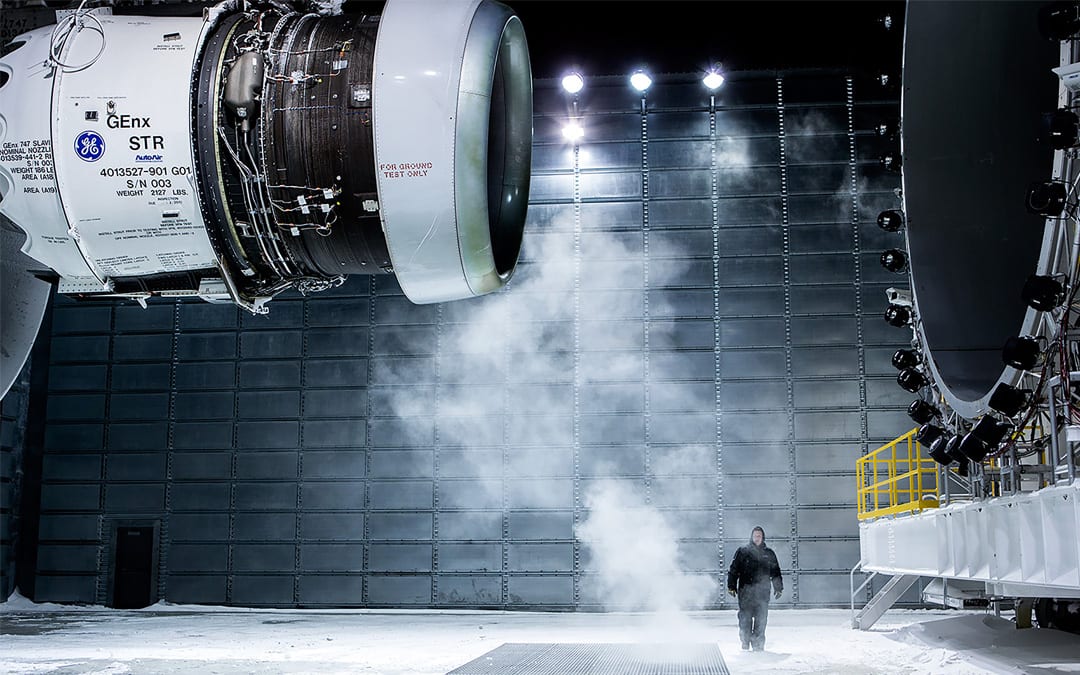Flip the Script: GEnx Program Caps Off Big Year With LATAM Airlines Deal
December 20, 2023 | by GE Reports
Nearly 20 years ago, GE Aerospace lost out in a competition to power part of LATAM Airlines’ passenger air fleet. But what goes around sometimes eventually does come around. Case in point: This month, LATAM announced it is ordering five additional Boeing 787-9 Dreamliner aircraft, all of which it plans to switch from competitor engines to GEnx-1B engines, making Chile-based LATAM the first airline in Latin America to utilize the GEnx.
It’s the kind of news you like to hear anytime, but for GEnx it amounts to icing on the cake.
“We are pleased to welcome the LATAM Airlines Group to the GEnx engine family,” said Kathy MacKenzie, vice president of GE Commercial Programs for GE Aerospace. “As LATAM continues to expand and grow its 787 Dreamliner fleet, we look forward to supporting their continued success every step of the way.”
The LATAM announcement caps what has turned out to be a big year for the GEnx product line. LATAM joins Riyadh Air in Saudi Arabia — which signed a deal at the Paris Air Show in June to take delivery of 90 GEnx-1B engines — as brand-new customers. What’s more, the program is slated to deliver more than three times as many GEnx engines this year as it did last year.
In August, the GEnx program achieved another milestone, with 50 million flight hours since entry into service in 2011, making it the fastest-selling high-thrust engine in GE history, with close to 3,000 in service and on backlog, including spares. Currently, the GEnx-1B powers two out of every three Boeing 787 aircraft in service, and in 2023 the program added firm commitments for more than 150 Dreamliners.
“Most customers, when they select a 787, have an option between a GEnx-1B engine and another engine,” said Dave Kircher, general manager for the GEnx program. “Our engine is at least 1.4% more fuel-efficient [than its predecessor GE engine] for a nominal 787 mission. That equates to $300,000 per airplane per year in fuel savings.”
“It also equates to a reduction of 2.2 million pounds of CO2 per aircraft annually. It’s an incredible part of our efforts to a more sustainable future,” Kircher added. “This product is just going to keep working for our customers.”
Kircher went on to point out that the GEnx team had made recent improvements inside the engine — an upgrade to the hot-section hardware inside the combustor as well as the high-pressure turbine blades. “This is the part of the engine where all the efficiency — all the magic — happens,” he said. “That upgrade will help reduce the operating cost of the engine by improving time on wing.”
Indeed, this year the program chalked up two time-on-wing milestones, with the leading GEnx-1B engine currently in service surpassing 8,000 cycles (a takeoff and a landing) and the leading GEnx-2B engine going over 10,000 cycles.
Of course, meeting the demands of new wide-body customers, whether in Latin America or the Middle East, presents new challenges. But Kircher sees it as a massive opportunity for GE Aerospace. “We’re going to do what we always do at GE,” he said — “continue to make our engines better, make them more efficient, and make them more reliable.”
It’s the kind of news you like to hear anytime, but for GEnx it amounts to icing on the cake.
“We are pleased to welcome the LATAM Airlines Group to the GEnx engine family,” said Kathy MacKenzie, vice president of GE Commercial Programs for GE Aerospace. “As LATAM continues to expand and grow its 787 Dreamliner fleet, we look forward to supporting their continued success every step of the way.”
The LATAM announcement caps what has turned out to be a big year for the GEnx product line. LATAM joins Riyadh Air in Saudi Arabia — which signed a deal at the Paris Air Show in June to take delivery of 90 GEnx-1B engines — as brand-new customers. What’s more, the program is slated to deliver more than three times as many GEnx engines this year as it did last year.
In August, the GEnx program achieved another milestone, with 50 million flight hours since entry into service in 2011, making it the fastest-selling high-thrust engine in GE history, with close to 3,000 in service and on backlog, including spares. Currently, the GEnx-1B powers two out of every three Boeing 787 aircraft in service, and in 2023 the program added firm commitments for more than 150 Dreamliners.
“Most customers, when they select a 787, have an option between a GEnx-1B engine and another engine,” said Dave Kircher, general manager for the GEnx program. “Our engine is at least 1.4% more fuel-efficient [than its predecessor GE engine] for a nominal 787 mission. That equates to $300,000 per airplane per year in fuel savings.”
“It also equates to a reduction of 2.2 million pounds of CO2 per aircraft annually. It’s an incredible part of our efforts to a more sustainable future,” Kircher added. “This product is just going to keep working for our customers.”
Kircher went on to point out that the GEnx team had made recent improvements inside the engine — an upgrade to the hot-section hardware inside the combustor as well as the high-pressure turbine blades. “This is the part of the engine where all the efficiency — all the magic — happens,” he said. “That upgrade will help reduce the operating cost of the engine by improving time on wing.”
Indeed, this year the program chalked up two time-on-wing milestones, with the leading GEnx-1B engine currently in service surpassing 8,000 cycles (a takeoff and a landing) and the leading GEnx-2B engine going over 10,000 cycles.
Of course, meeting the demands of new wide-body customers, whether in Latin America or the Middle East, presents new challenges. But Kircher sees it as a massive opportunity for GE Aerospace. “We’re going to do what we always do at GE,” he said — “continue to make our engines better, make them more efficient, and make them more reliable.”





